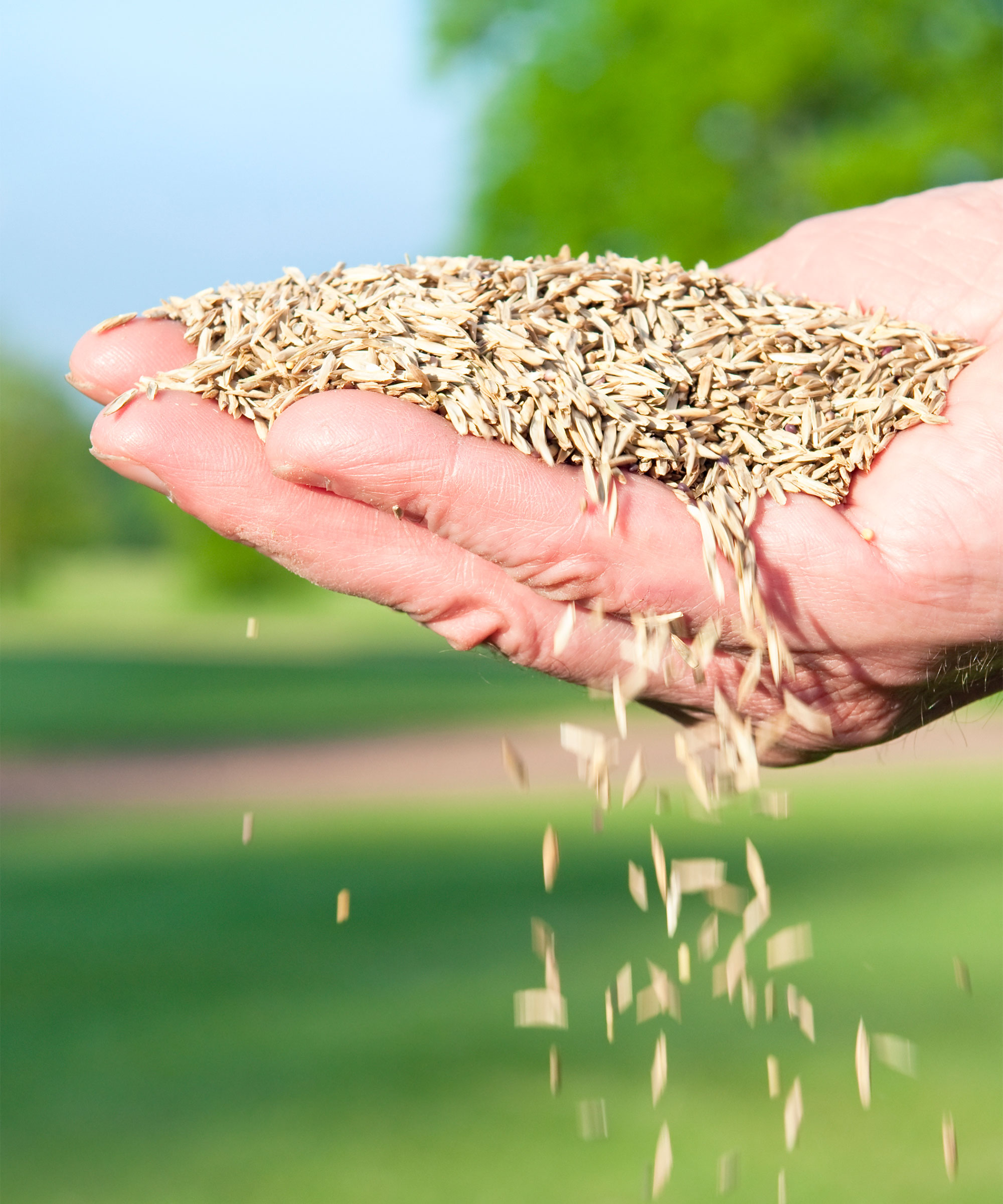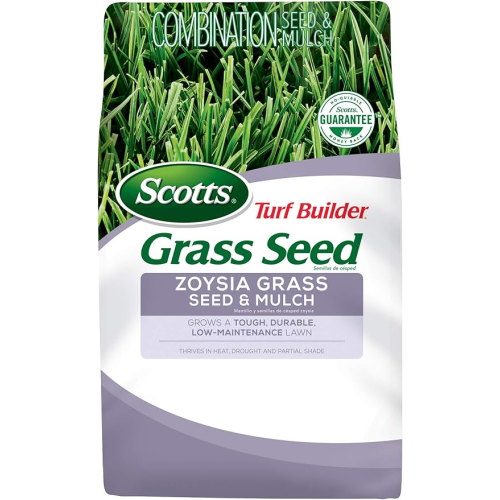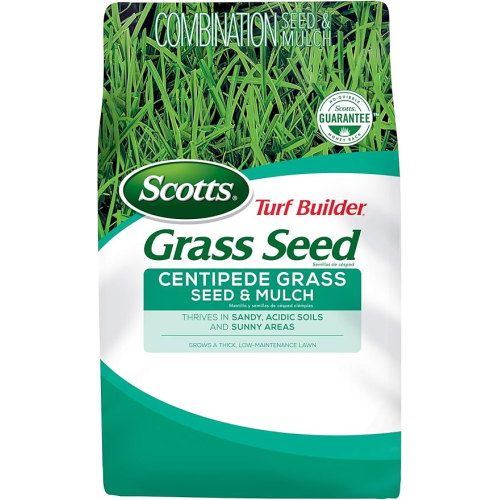Is it too late to plant grass seed in June? Here’s what the lawn experts say as they share professional tips for success
June is the perfect time to do many lawn care jobs, but is planting grass seed one of them?


A pristine lawn is on the summer wish list for many. As people spend more time in their garden as the temperatures rise, whether relaxing, playing with children or hosting parties and family gatherings, they like the lawn to look its best.
June is the perfect time to do many lawn care jobs. Regular mowing, watering, weeding, and edging will keep any lawn looking in fantastic shape. However, if sections need a bit of extra TLC, can you plant grass seed in June?
To answer that particular question, we spoke to lawn care experts about when to sow grass seed and whether they would recommend planting it in June. Here's what they advise.

Lawn care in June – the essentials
Firstly, let's start with those key lawn care jobs that you do want to be doing in June.
You want to mow the lawn every week or two to keep it neat, ideally in a different mowing pattern each time rather than the same up-and-down routine, to keep the grass healthy.
Taking time to edge a lawn after cutting will give a slick, neat outline and create separation from flower beds or a kitchen garden. And, finally, watering the lawn during spells of hot weather will keep it green and healthy rather than brown and patchy.
Can you plant grass seed in June? What the experts say

A lawn may have bare patches of grass that require overseeding in June. Or, you may envisage a bigger job and planting grass seed to establish a new lawn, or a section of lawn. The good news is, you can plant grass seed in June.
Design expertise in your inbox – from inspiring decorating ideas and beautiful celebrity homes to practical gardening advice and shopping round-ups.
‘You can definitely sow grass seed in June – if you pick the right variety,’ claims Ben Ashton, CEO of Rocky Mountain Turf. He cites warm-season grasses as much more ideal for planting this month, due to their increased heat tolerance over cool-season grasses.
‘Generally, warm-season grass is best planted in the late spring or early summer, so June often falls into that category, while cool-season grass is best planted in the late summer or early fall,’ adds Steve Corcoran, CEO of Lawn Love.
What about cooler-season grasses? Is there any point in attempting to plant those seeds in June? Well, Jason Keeley, founder of Mowing Magic, doesn’t think the door is completely shut on planting those grass seeds in June.
‘For cool-season grasses like fescue or Kentucky bluegrass, fall is preferable, but June can still work if you're prepared to irrigate regularly and manage heat stress,’ he claims.
So the good news is that you can plant grass seed in June, especially if you intend to use warm-season grasses such as Zoysia grass, Bermuda grass, centipede grass, or St. Augustine grass.

Jason Keeley is a seasoned lawn care professional and robotic mower expert with years of hands-on experience in the industry. He launched Mowing Magic in 2019 to help homeowners and businesses achieve perfectly manicured lawns with less effort.
Expert tips for planting grass seed in June

As well as selecting the right types of fast-growing grass seeds, what other practical advice does the lawn experts recommend for anyone who wants to plant grass seed in June?
The temperature is going to pose the biggest challenge in June, as it is a warm and often dry month in many regions. This can cause problems with germination, but with care and attention, it need not ruin your ambitions for a green and thick lawn.
Jason Keeley from Mowing Magic says: ‘Soil temperatures around 60-75°F are optimal for germination, and daytime temperatures that don’t consistently exceed 85°F are ideal.’ He advises trying to ensure that seeds aren’t ‘exposed to harsh direct sunlight’ all day, which risks drying out the soil and scorching seedlings.
It may mean it is more efficient to concentrate efforts on shadier parts of the lawn, or setting up shade cloth can protect areas from the strong afternoon sun.
Watering is a vital task when planting grass seed in June, as it requires consistently moist soil for successful germination.
It may mean daily watering to keep the top inch of soil moist in warm temperatures. However, there are ways to water the lawn in hot weather that help make the most of the water you are applying.
‘As things heat up in June, your water can start to evaporate rather than penetrating deep into the soil like you want it to,’ says Ryan Farley, CEO of LawnStarter. ‘To get around this, I'd recommend setting up your water scheduling so you're avoiding the hottest parts of the day.
‘Stick to thorough, deep watering in the early morning, early afternoon, and evening.’
Protect any newly-planted areas of grass seed from children or pets and avoid any heavy use of the section while the grass is establishing.
And finally, don’t cut new grass until the blades reach at least three inches tall. But don’t go too short and avoid cutting more than one-third of the height.

Ryan Farley is the CEO of LawnStarter, a lawn care service founded in 2013 and based in Austin, Texas.
FAQs
Is June too late to scarify the lawn?
June is not an ideal time to scarify a lawn. The right times of year are as part of fall or spring lawn care. June is too late and it can damage or stress the lawn if you scarify or dethatch a lawn in warmer months.
Can you lay turf in June?
Knowing when to lay turf potentially saves you lots of time and effort. The ideal times are in fall or spring. While you can lay turf in June, it will require regular and extensive watering to get it established.
Lawn care is a year-round requirement to keep any grass looking at its best, and there are some common errors that people make. To avoid making any of them yourself, our guide to five common lawn care mistakes highlights issues such as overwatering, over-fertilizing, and mowing too low, not to fall foul of.

Drew has worked as a writer since 2008 and was also a professional gardener for many years. As a trained horticulturist, he worked in prestigious historic gardens, including Hanbury Hall and the world-famous Hidcote Manor Garden. He also spent time as a specialist kitchen gardener at Soho Farmhouse and Netherby Hall, where he grew vegetables, fruit, herbs, and cut flowers for restaurants. Drew has written for numerous print and online publications and is an allotment holder and garden blogger. He is shortlisted for the Digital Gardening Writer of the Year at the 2025 Garden Media Guild Awards.


